Puto Bumbong
Featured photo courtesy of Mayette Garcia.
A popular kakanin (rice delicacy) during the Christmas holidays, puto bumbong is purple-colored rice steamed in bamboo tubes and served with grated coconut and brown sugar.
Cocos nucifera is the scientific name of the common coconut. This very tall palm tree is always an inviting symbol of the tropics. The plant is one of the most valuable plants to man. It is a primary source of food, drink, and shelter. In Sanskrit the coconut palm is called “kalpa vriksha”, which is defined as “the tree which provides all the necessities of life.”
The white nut-meat can be eaten raw or shredded and dried and used in most cooking recipes. A single coconut has as much protein as a quarter pound of beefsteak. Copra, the dried meat of the kernels, when crushed is the source of coconut oil. The husks, known as coir, is a short, coarse, elastic fibers used to make an excellent thatch roofing material for houses. This very diverse plant is also an excellent charcoal, which is produced from the shells, not only does it work as a cooking fuel, but also in the production of gas masks and air filters.
The outer part of the trunk of the coconut palm furnishes, a construction lumber, known as porcupine wood for houses and furniture. The swollen base of the trunk, when hollowed, can be turned into a hula drum that the Hawaiians use for entertainment. These are just a few examples of how extraordinary the coconut palm can be utilized.
The coconut was first mentioned in 545 AD by an Egyptian Monk named Cosmos Indicopleustes. He visited western India and Ceylon. In his “Topographia Christiana”, Cosmos describes the coconut as the “great nut of India.” The Mahavasma, an ancient chronological history of Ceylon, describes the planting of coconuts in that country in 589 AD.
In 1280 Marco Polo, described coconut growing in Sumatra, as well as in Madras and Malabar in India, calling it nux indica, the Indian nut. The first detailed description of the coconut palm in western literature was provided by the Italian explorer Lodovico, di Varthema in his “Itinerario” of 1510, in which he referred to it astenga.
The coconut palm was unquestionable spread by Austronesians through the Pacific, perhaps eventually to the Pacific coast of Central America, and westward to India and East Africa. In Western Melanesian charred fruits were sited back to 3000 BC. The coconut was an important tropical economic with its enormous range of uses.
Palmae, the palm family to which the coconut belongs to, is one of the oldest and most diverse of the plant families. Palms have many botanical characteristics such as woody trunk, in many species, perennial growth, leaves which are folded like a fan and the production of a single seed leaf which, along with grasses, lilies and other families classifies them as monocotyledons. There have been sixty other species under the genus Cocos, but the coconut palm stands by itself and is monotypic – meaning that within the genus Cocos only one species, nucifera, is recognized. Consequently, every coconut palm in the world is taxonomically the same species, which probably makes it most abundant single food tree in existence.
There have been many other palms that have been classified very closely to the coconut, which have confused it with other plethora of scientific and popular names. One example, the double coconut, also known as the Maldive nut, Lodoicea maldivia. This very large nut looks like two coconuts joined together, side by side, but it is not related to the coconut. It belongs to the Borassoid group of palms.
Two major classes of coconuts are typically recognized on the basis of stature: tall and dwarf. The ones most commonly planted for commercial purposes are the tall varieties, which are slow to mature and first flower six to ten years after planting. They produce medium-to-large size nuts and have a life span of sixty to seventy years. The dwarf varieties may have originated as a mutation of tall types. The dwarf variety may grow to a height of twenty-five to thirty feet and begin flower after three years, being only about three feet tall. Their life span is only about thirty years. Although highly difficult to grow, the dwarf varieties are valued because they bear early and are resistant to lethal yellowing disease.
There are a considerable number of varieties of coconut including tall and dwarf that have resulted in worldwide distribution. Each major coconut has its own dominant tall variety: Here is a listing: Ceylon Tall, Indian Tall, Jamaica Tall, Malayan Tall, Java Tall, and Laguna (which is a widely grown tall type in the Philippines). There are also many dwarf varieties: Malayan Dwarf, Dwarf Green, and Dwarf Orange from India.
There are also some unusual types of coconut palms in different parts of the world. The Macapuno coconut of the Philippines is famous for having no milk cavity. The jelly-like flesh fills the middle and can be eaten with a spoon. The San Ramon variety from the Philippines produces one of the largest nuts known.
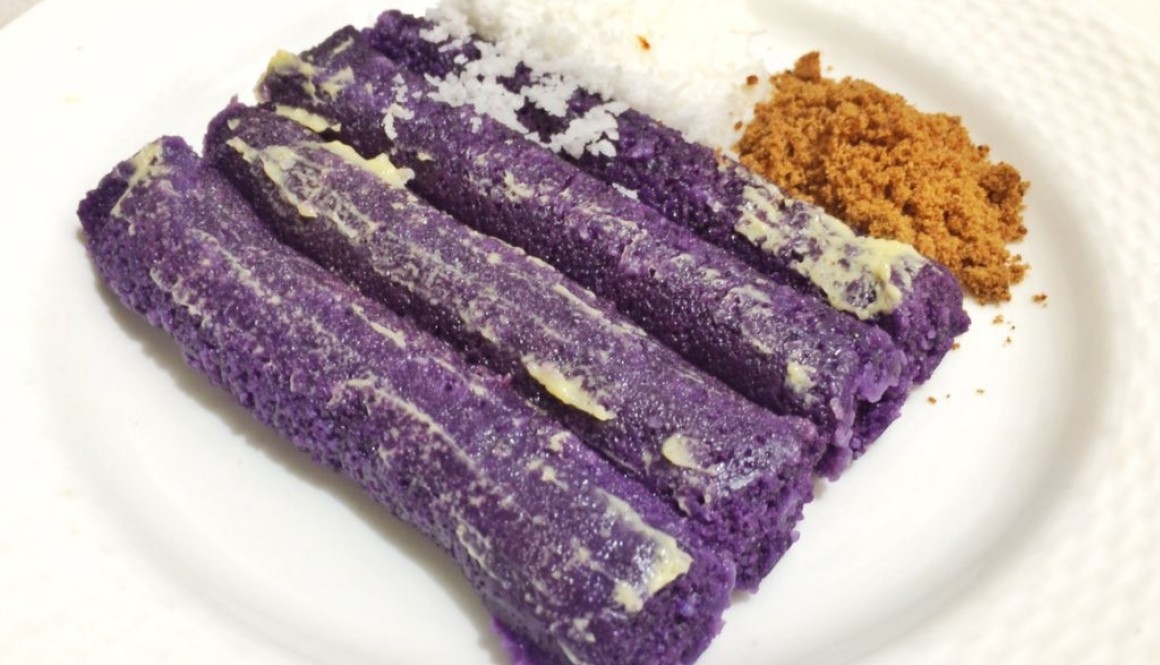
Featured photo courtesy of Mayette Garcia.
A popular kakanin (rice delicacy) during the Christmas holidays, puto bumbong is purple-colored rice steamed in bamboo tubes and served with grated coconut and brown sugar.
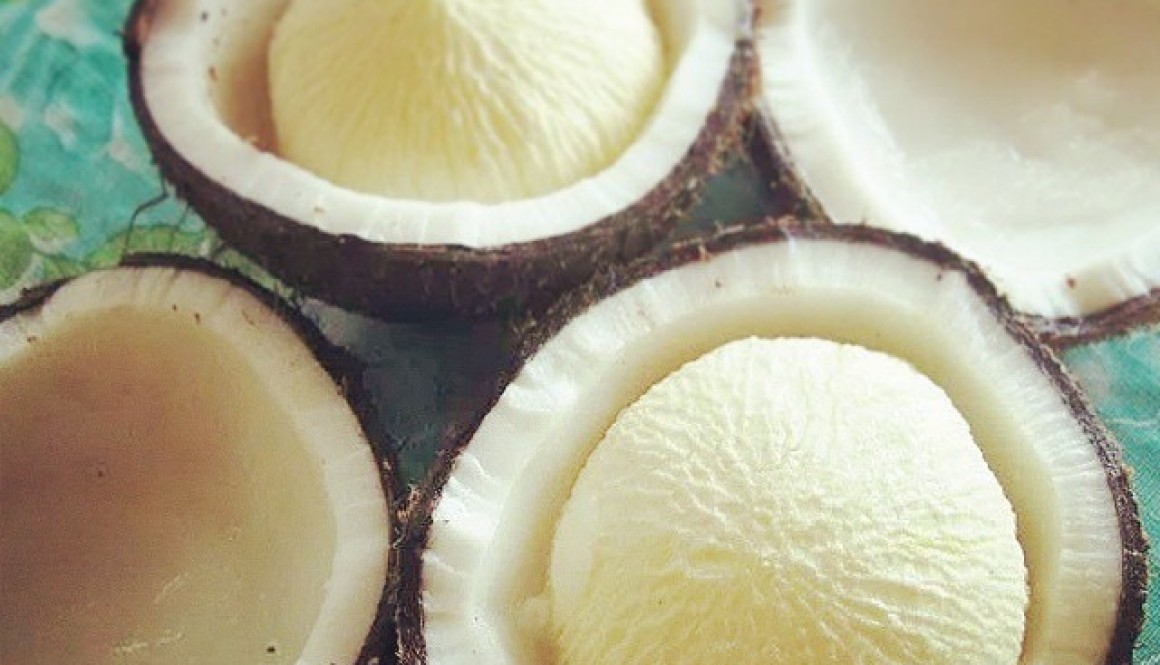
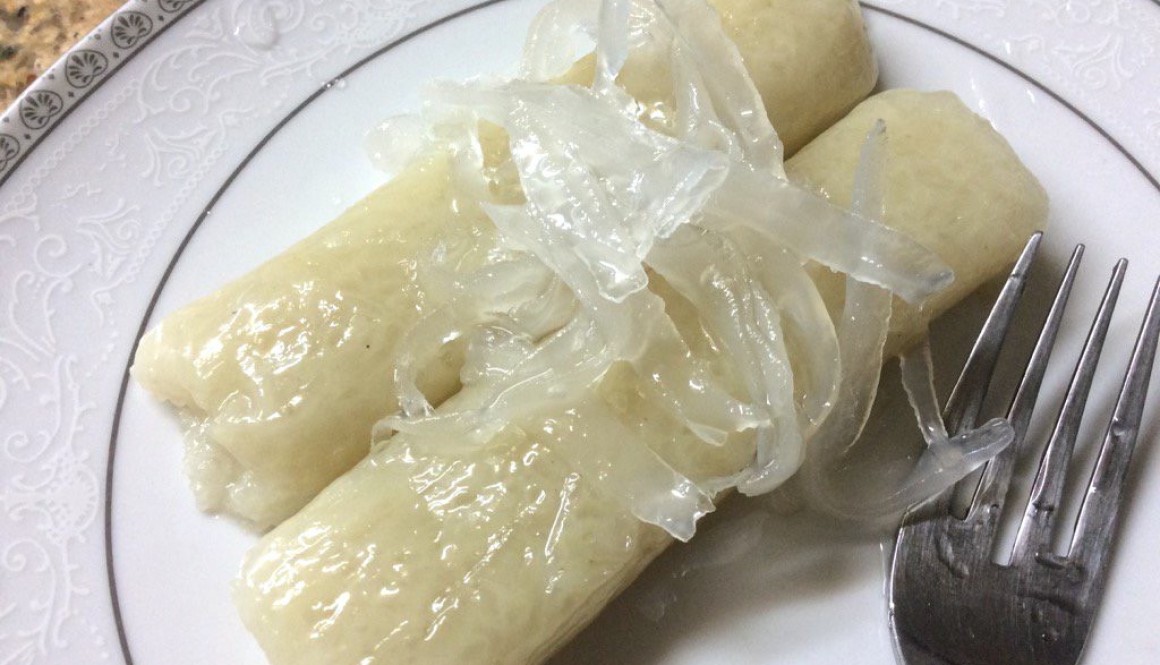
Photo By Toyang Noresa of Suman Topped With Macapuno Strings
Can you tell the difference between authentic macapuno and young coconut being passed off as macapuno?
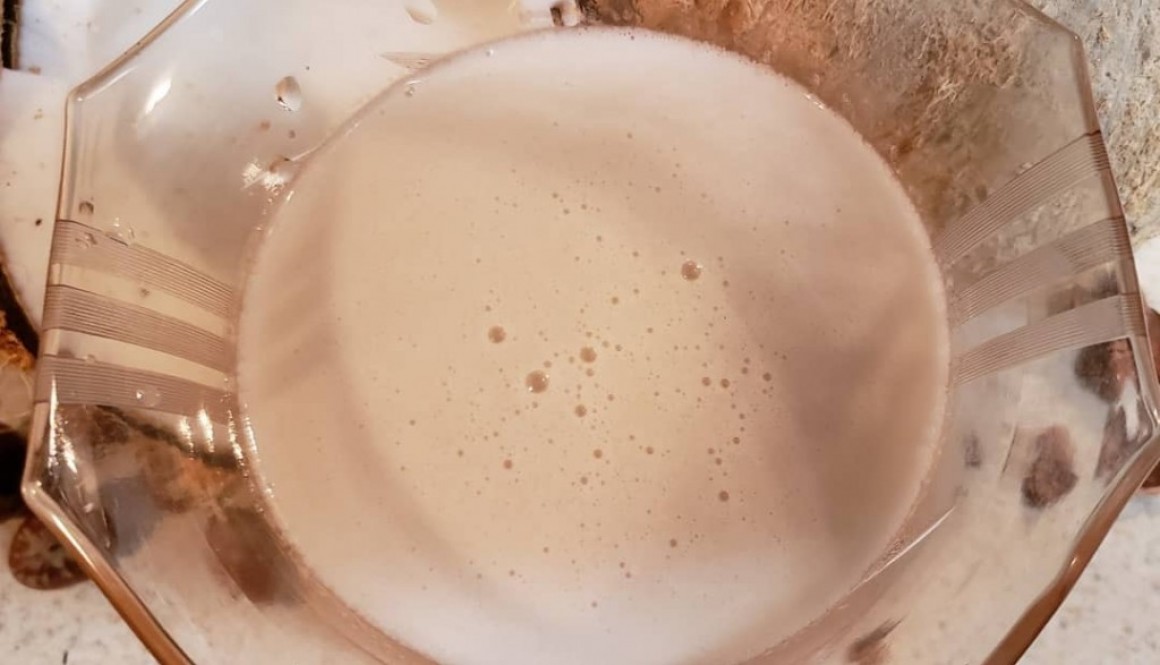
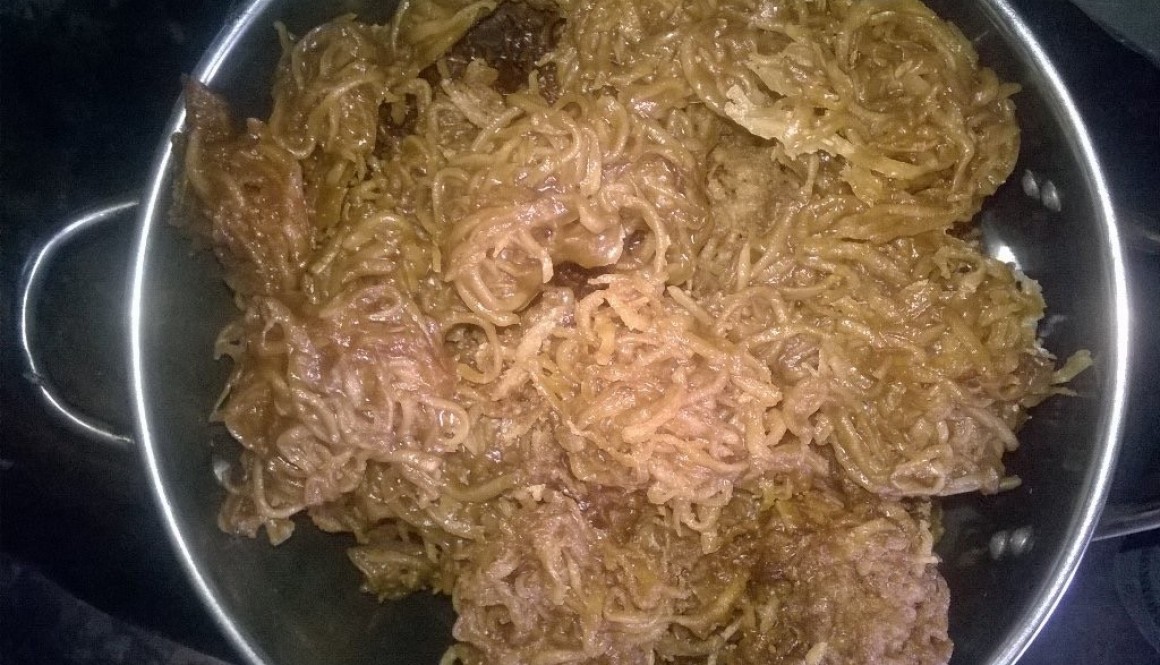
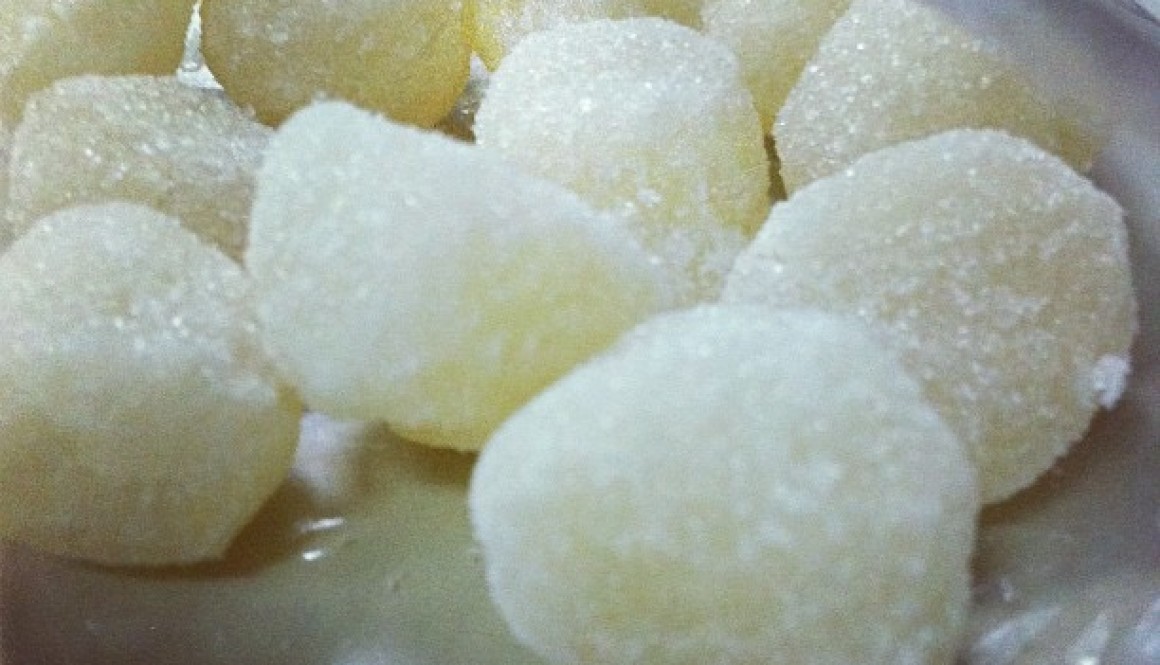
Macapuno is a very special kind of soft coconut meat. Considered a delicacy in the Philippines, it is preserved in heavy sugar syrup, usually as long shreds. You can buy bottled macapuno, which can be used as an ingredient in haluhalo. It is also a popular flavor of ice cream.
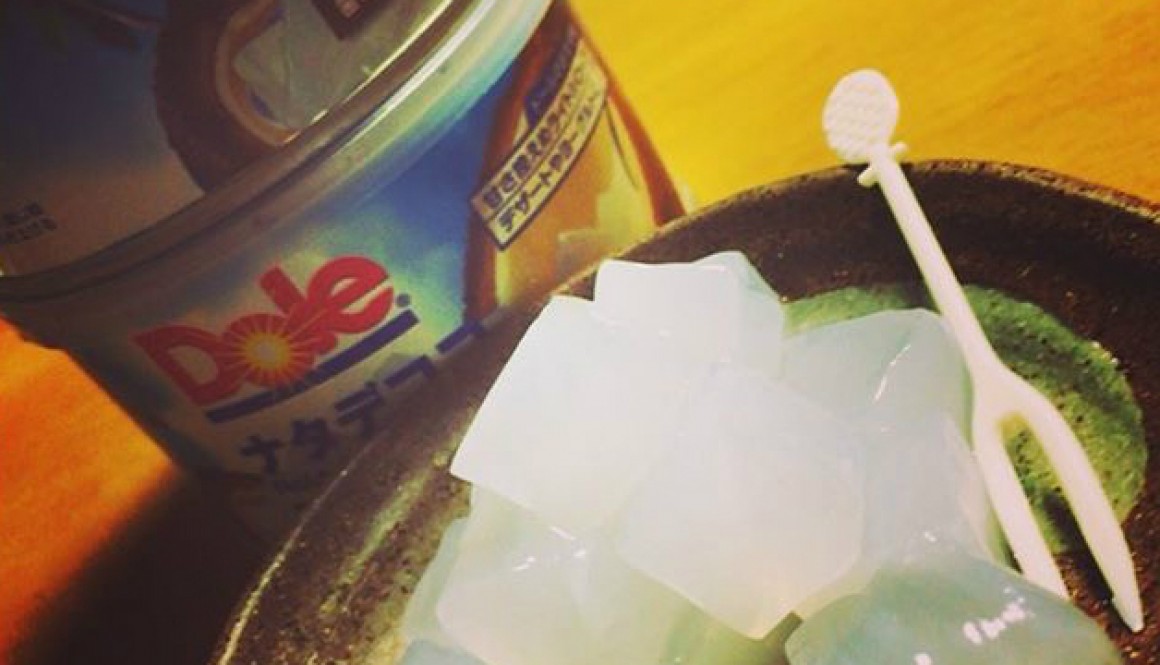
Nata is the Spanish word for cream, but Nata de Coco is more like cubes of coconut-flavored gelatin. The gel is cultured from coconut water.
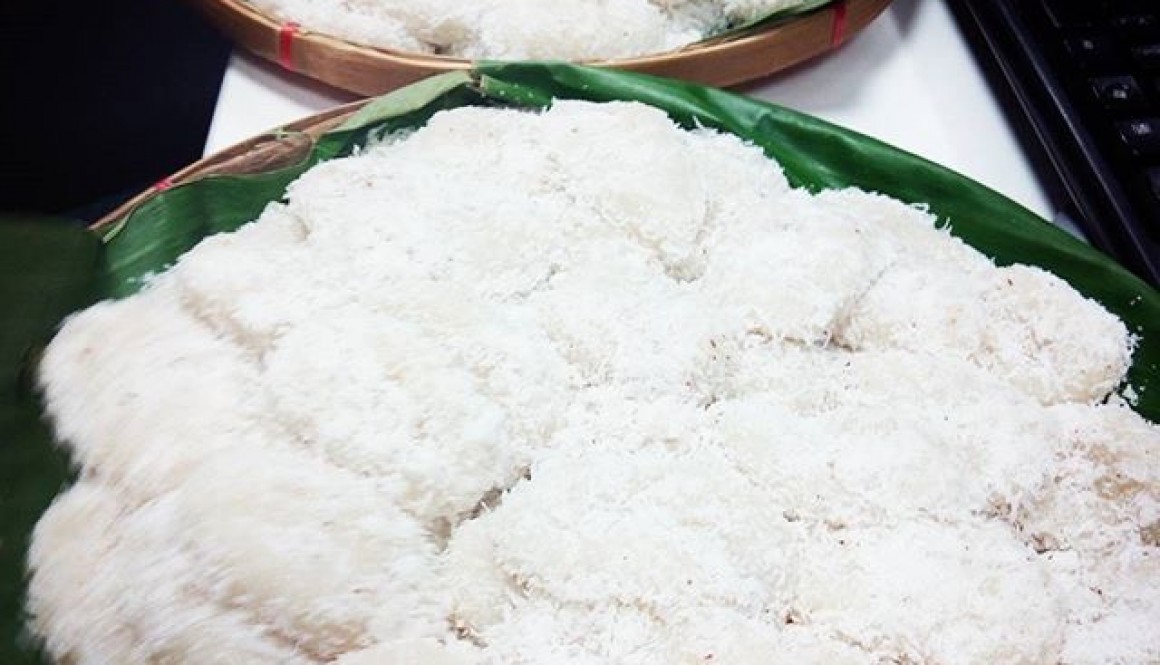
Palitao are rice patties cooked in boiling water, drained, then served topped with grated coconut, toasted sesame seeds, and white sugar.
In the Tagalog language, palitaw means “to surface” and this refers to the flat oval-shaped pieces of rice dough floating to the top of boiling water once they are cooked.

In Laguna, tumbong ng niyog (the soft white growths found inside some